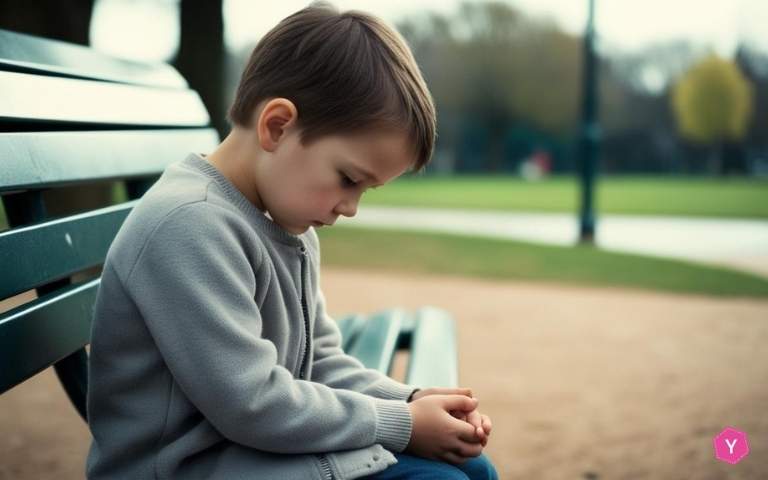What to Do When You Find Out Your Child Is Bullying Others

Would you ever believe your child could be involved in bullying behavior? For most of us, the immediate reaction is, “My child won’t do this!”
However, discovering that your child is bullying others can be both shocking and distressing.
As parents, we naturally focus on protecting our children, but when the tables turn, it becomes our responsibility to step in with compassion and guidance.
Bullying is a serious issue with lasting consequences, not just for the victims but for the bully as well. Consider this an opportunity to teach, support, and help your child grow into a more empathetic and responsible individual.
What Does Bullying Really Look Like?
Stop imagining extreme scenarios when thinking of the term “Bullying”. The reality can be more subtle and complex.
Bullying is not just a one-time event, it’s repeated behavior meant to harm, intimidate, or control others.
Even children who typically show kindness can engage in bullying if they are struggling with underlying emotions or unmet needs.
Bullying can take different forms, that we as a parent may fail to recognise.
- Physical Bullying: Actions like hitting, kicking, or damaging someone’s belongings.
- Verbal Bullying: Words can hurt—name-calling, teasing, or making hurtful comments.
- Social Bullying: Excluding someone from a group or spreading rumors to isolate them.
- Cyberbullying: Using technology to send hurtful messages or publicly embarrass someone.
Each of these behaviors can leave deep emotional scars on the victim as well as the child engaging in bullying.
The first step toward helping your child make better choices is recognizing this behavior.

Signs to Watch For
Children who engage in bullying might not always show obvious signs, but there are certain patterns to notice.
- They may struggle to show empathy toward others.
- You might see them trying to dominate situations or others around them.
- Frequent feedback from teachers or peers about unkind behavior can be a red flag.
- They might dismiss their actions by saying, “I was just joking,” even when those actions clearly hurt someone.
Approach these behaviors with curiosity rather than blame. This can open the door to understanding why they are actually happening.
Ask yourself, “What is my child trying to communicate through this behavior?”. This can help address the root cause of this behavior with compassion.
What To Do If Your Child Is Bullying Others
Let’s accept the fact. No parent want to face this situation. But, just in case, you come to know of such a bullying behavior in your child, what will we do?
It can be scary. You might feel like you’ve failed as a parent.
That sinking guilt can creep in.
It can make you question everything you’ve done so far.
But this is not the time to blame yourself or overthink on what went wrong.
This is your moment to step in and guide your child, to teach them, help them grow, and show them the kind of person they can become.
But, how can you do that? Here are a things you can do.
Step 1: Stay Calm and Approach with Empathy
Hearing that your child is bullying others can trigger feelings of anger, guilt, or denial. However, it’s crucial to stay calm. Overreacting can make your child defensive. It will definitely become a hindrance to an honest discussion.
Instead, approach them with empathy and open-ended questions.
Ask things like,
- “I heard about an incident at school. Can you tell me what happened?”
- “How were you feeling when this occurred?”
Such questions make your child to share their perspective without fear of punishment,. Eventually, you can understand the situation better.
Step 2: Listen Without Judgment
When your child opens up, listen carefully without interrupting or making accusations.
Yes, it is normal human behavior to want to defend yourself or jump in with solutions.
But this moment isn’t about you. You need to give your child the space to express themselves.
Let them talk, even if what they say feels difficult to hear. Your calm, open presence can make all the difference in helping them feel understood.
Avoid labeling them as a “bully”, as this can create shame and defensiveness. Instead, focus on their actions and the impact of those actions on others.
For example, say, “What you did hurt someone else. How do you think that made them feel?” This helps your child develop empathy and take responsibility for their behavior.
Step 3: Identify the Root Cause
Believe it or not, bullying often stems from underlying issues.
Ask yourself:
- Is my child experiencing peer pressure?
- Are they struggling with low self-esteem?
- Do they have unresolved emotional or behavioral problems?
- Could there be a family issue contributing to their behavior?
You NEED to understand the root cause if you wish to address the problem effectively.
Step 4: Set Clear Boundaries
Children need to understand that BULLYING IS UNACCEPTABLE.
Establish clear consequences for bullying behavior, both at home and in school.
For example:
- Requiring them to write an apology letter to the victim.
- Losing privileges like attending a favorite activity.
Consistency is key when enforcing these boundaries.
Step 5: Teach Empathy
Empathy is a skill that can be nurtured.
Help your child understand how their actions affect others. You can do this in following ways.
- Encourage them to imagine being in the victim’s shoes.
- Watch movies or read books that highlight the impact of bullying.
- Discuss scenarios and ask how they would feel in similar situations.
Step 6: Work on Conflict Resolution Skills
Sometimes, children resort to bullying because they lack healthy ways to resolve conflicts. Teach them,
- How to express their feelings without aggression.
- The importance of using “I” statements (e.g., “I feel upset when…”).
- Strategies for walking away from heated situations.
Role-playing common scenarios can help them practice these skills.
Step 7: Collaborate with Teachers and Counselors
We all will accept that bullying often occurs in school settings. So, it is important to involve teachers and school counselors in such cases.
They can provide valuable insights and resources to address the issue.
Ask the school about:
- Anti-bullying programs or workshops.
- Individual or group counseling sessions.
- Opportunities for your child to make amends in a positive way.
Step 8: Monitor Behavior Changes
Keep track of your child’s behavior over time.
Are they showing signs of improvement?
Are they more empathetic towards others?
Regularly check in with teachers, coaches, or other adults in your child’s life to get feedback.
Celebrate small wins, such as your child showing kindness or standing up for others. Positive reinforcement encourages lasting change.
Step 9: Be a Role Model
The most important thing to understand, as a parent, is that children often mimic the behavior they observe at home. Reflect on your actions and communication style.
- Do you resolve conflicts calmly?
- Are you respectful to others, even in challenging situations?
- Do you speak positively about others?
Model kindness and empathy and set an example for your child to follow.
Step 10: Seek Professional Help
If bullying behavior persists despite your efforts, consider seeking professional help.
Therapists or counselors can work with your child to address underlying emotional or behavioral issues.
Family counseling can also be beneficial if the problem stems from family dynamics.
Preventing Bullying in the Future
Prevention is as important as intervention.
Here’s how you can ensure your child doesn’t revert to bullying:
- Open Communication: Create a safe space where your child feels comfortable sharing their thoughts and feelings.
- Positive Friendships: Promote friendships with children who demonstrate kindness and respect.
- Inclusivity: Discuss the importance of accepting differences and celebrating diversity.
- Supervise Digital Activity: Monitor your child’s online interactions to prevent cyberbullying.
- Reinforce Positive Behavior: Praise your child when they show kindness, cooperation, or empathy.
Conclusion
Bullying is a complex issue, but with patience, empathy, and proactive steps, you can help your child overcome this behavior.
Take action today to ensure your child understands the impact of their actions and becomes a force for kindness in their community.




